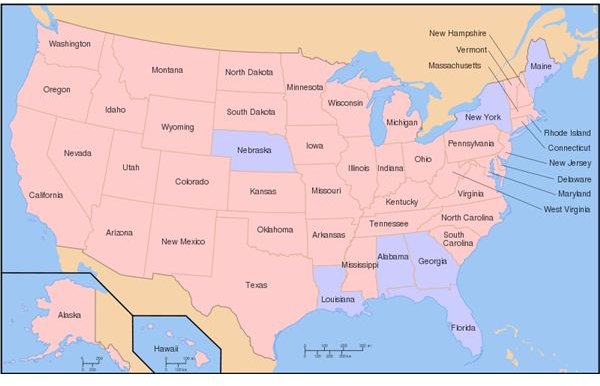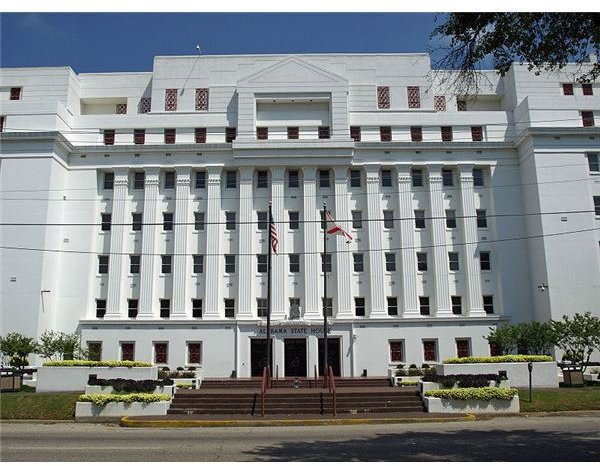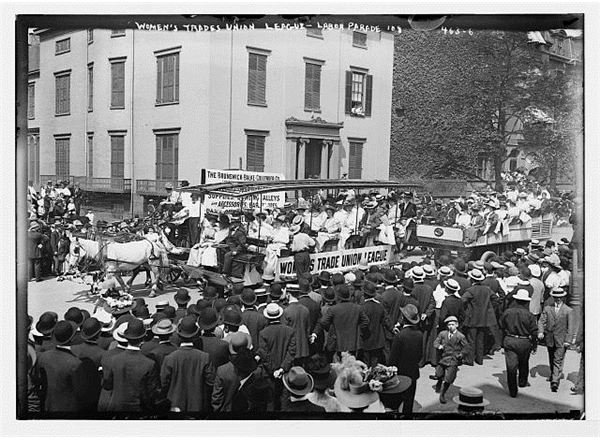Reflecting on Employment-At-Will States: How Fair Labor Practices are Implemented
The Employment-At-Will Policy
.
Under U.S. labor laws, it is generally considered that all states are employment-at-will states. This is true unless there are existing statutory laws that specifically disqualify the application of the at-will principle or provide specific exceptions on how the at-will principle should be applied within the state’s jurisdiction. Accordingly, the recognition of the employment–at-will concept was based on the premise that the employer and the employee worked on equal footing.
In the early 1900s, when labor laws were still being developed, both employer and employee were free to make their own choices of working conditions that would best benefit them.
However, employees, through their labor unions, negotiated and entered into collective bargaining agreements with their employers instead of exercising the at-will doctrine by simply leaving one’s job. Part of these agreements included the recognition of just causes and implementation of proper grievance procedures before an employee was terminated.
By the years 1960s through 1980s, it became evident that employer-employee relationships had reached a point where equal footing was no longer applicable. Employers were considered to have more economic advantage when it came to commitments and decisions about employees’ working conditions. Employers simply enforced the at-will principle rather than enter into collective bargaining agreements with labor union negotiators.
Thus, federal legislative bodies came up with employee protection laws based on the modified 1964 Civil Rights Act. This provided employee protection against wrongful terminations based on acts of discrimination against race, age, sex, religion, national origin or color.
In connection to this, statutory laws that emanated from court case rulings were transformed into what are known as common laws. Such laws became enforceable, except in cases where the U.S. Supreme Court intervened and overturned a ruling, which could likewise repeal a statutory law based on court case decisions.
The Three Major Exceptions to the At-Will Concept

The complexities of the different laws legislated at the state or federal level gave rise to a covenant among all states. This pertained to the recognition of three major exceptions to the at-will-employment policy, as a means to attain clarity and order in the implementation of labor laws.
Hence in the interest of fail labor practices, it was established that the three major exceptions to the at-will-rule are:
-
The violation of the provisions of the 1964 Civil Rights Act regarding discrimination issues.
-
The element of implied contract in an employment relationship where workers are assured of continuous employment by way of oral promises, and through job promotions as incentives for excellent performances; the mechanics of these are mostly embodied in employment policies, manuals or handbooks.
-
The acts of good faith manifested by the implementation of employment policies to ensure fair dealings and recognition of employees’ efforts also imply that employee compliance will lead to security of tenure.
However, not all states recognize these exceptions. Those that do not hold on to the original context of the at-will doctrine. To date there are eight states that are recognized as employment-at-will states, which we will closely examine in the following sections.
Overview of the Eight Employment-At-Will States:

Employment-at will states do not recognize all or at least one or two of the three established exceptions as qualifying conditions by which the employer’s right to terminate can be challenged. The only exceptions they recognize is an employment contract or a collective bargaining agreement that governs the working relationships.
Employees, on the other hand, are likewise free to seek employment elsewhere if they believe they are being unjustly treated by their employers. In the same way, only the existence of employment contracts or collective bargaining agreement can bind them into performing their jobs.
Still, these states recognize the significance of fair labor practices and the obligations of the employers to carry out legal and moral actions in accordance with the laws promulgated by the federal government. The remedy is simple: Employers must observe all federal labor laws and directives while employees should seek redress from federal regulatory bodies or resolve their problems about violations or discriminations with their human resources department.
In such cases, the appropriate federal agencies like the Department of Labor, the Equal Employment Opportunity Commission (EEOC), or the Occupational Safety and Health Administration (OSHA) evaluate the complaints or charges of wrongful terminations. The respective federal agency then assumes the responsibility of imposing the appropriate rulings and disciplinary actions over the erring employers.
Charges that are regarded as extraordinary, for which remedies are not found in the provisions imposed by any governing agency or body, are then brought to the courts of laws.
A Closer Look at the Eight Employment-At-Will States

1. Alabama – The state of Alabama has no other laws that modify the at-will employment doctrine and maintains that employees who believe their rights as workers have been violated are directed to refer their cases to the EEOC.
2. Florida – Under Florida laws, the absence of contracts that specify a term of employment constitutes an employment-at-will condition. Hence, breach of all provisions contained in the employment contract is the only ground on which an employee can file for wrongful termination.
In addition, Florida courts have expressly rejected arguments about employee handbooks and promotions as acceptable indications of implied employment contracts.

3. Georgia – The state of Georgia originally did not recognize violation of public policies as an exception to the at-will rule. In recent years however, this state has included the following as additional bases for discriminatory acts:
-
Discrimination against job applicants who have declared bankruptcy status.
-
Discrimination against disabled individuals who meet the required skills, experience, education and other job-related requisites.
-
Discrimination against pregnant women is likewise specifically prohibited.
-
Other acts of discrimination, which the state of Georgia recognizes as violation of an employee’s civil rights, include acts of retaliation for filing charges or complaints, sexual harassment, violation of the Family Medical Leave Act and Equal Pay Act.

4. Louisiana – The state of Louisiana does not readily recognize violations of public policy as exceptions to the right of the employer to terminate an employee without just cause.
- Employee’s grievances that arise from any acts of discrimination are first brought to the EEOC within 180 days from the date that the discriminatory act was committed.
- However, discharge or termination, lack of promotion and unequal pay arising from discrimination due to race, color, sex, age, national origin, disability and union membership are now expressly prohibited by the state.
Employers are likewise prohibited from committing retaliatory acts against employees who file claims:
- for equal compensation,
- for filing complaints against environmental violations,
- for filing OSHA complaints, and,
- for whistleblowing acts.

5. Maine – This state maintains the at-will doctrine in employment, and the only exception it recognizes are violations of collective bargaining agreements or contracts that specify the causes for termination. Any other issues that an employee may have regarding wrongful termination are to be directed to the employer’s human resources department or to the Bureau of Labor Standards.
6. Nebraska – The existence of employment contracts or collective bargaining agreements are the only exceptions the state recognizes as applicable to this rule. However, recent developments have it that the Nebraska Supreme Court have warned against employers who make oral assurances or promises and that an employee who is led to believe that he or she has security of employment by way of employers’ promises or remarks may benefit from an implied contract of employment.
The court further suggests the insertion of a disclaimer statement in employee handbooks and manuals as additional protection for employers to preclude any misconception of implied contract.

7. New York – This at-will state basically recognizes the employers’ obligation to deal fairly and in good faith with their employees. Several reasons for discrimination other than those provided in public policies has occurred in this state, including unlawful termination due to an employee’s refusal to commit perjury.
However, the state of New York has remained reluctant in expanding the violations of public policy out of wrongful terminations which were committed in bad faith by employers.
8. Rhode Island – Employers in this state reserve the right to terminate employees at will and the Rhode Island courts continue to support this, except when the employees are covered by contracts that specifically state that they are being hired for an indefinite period of time. Hence, implied contracts are not recognized as exceptions to the at-will rule for employment.
As a summary, business owners and human resources managers operating in these employment-at-will states are tasked by the court to familiarize themselves with the provisions and regulations of the Department of Labor, the EEOC, OSHA and the statutory as well as federal laws existing, e.g. Family Medical Leave Act, Equal Pay Act, WARN Act and the like, to serve as their main guidelines for observing fair and just labor practices.
Reference Materials and Image Credits:
References:
- Employment at Will the Three Major Exceptions. Monthly Labor Review, January 2001, by Charles Muhi–https://www.docstoc.com/docs/4581701/employment-at-will
Image Credits:
- 1908-WTUL-laborday
- 19 Mar 2007 Seattle Demo 12
- [At-will employment - public policy exceptions](https://upload.wikimedia.org/wikipedia/commons/4/45/At-will_employment_-_public_poli cy_exceptions.svg)
- Discarded dreams 1 of 3.
- Alabama State House Apr2009.
- Georgia State Capitol
- Louisiana State Capitol, Baton Rouge
- Old Rhode Island State House edit1
